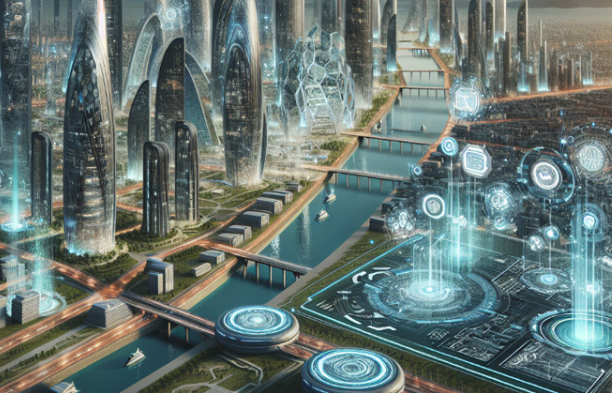Engineering Solutions for the Challenges in AI Development
As artificial intelligence (AI) continues to reshape industries and redefine human capabilities, its development is not without significant hurdles. From computational limitations to ethical concerns and scalability issues, the road to AI maturity is filled with complex challenges. Engineering solutions — spanning hardware, software, data, and ethical frameworks — play a critical role in addressing these obstacles, enabling AI to reach its full transformative potential.
Understanding the Key Challenges in AI Development
Before diving into the engineering solutions, it’s important to understand the primary challenges facing AI today:
- Computational Demands: Training sophisticated AI models requires immense processing power.
- Data Quality and Availability: AI systems depend on vast amounts of high-quality, diverse data.
- Scalability and Integration: Deploying AI at scale across industries poses technical and logistical challenges.
- Bias and Ethical Concerns: AI systems can perpetuate biases and raise privacy issues.
- Energy Consumption: AI model training consumes substantial energy, impacting sustainability.
- Model Interpretability: Many AI systems operate as “black boxes,” making their decision-making processes hard to understand.
Fortunately, engineering innovation is tackling each of these issues with remarkable ingenuity.
Hardware Engineering: Powering AI’s Computational Needs
AI development relies heavily on powerful hardware systems capable of processing complex algorithms and vast datasets. Traditional CPUs are often insufficient for modern AI tasks, leading to the engineering of specialized hardware.
Engineering Solutions in Hardware:
- GPUs and TPUs: Designed to handle thousands of parallel computations, these processors drastically reduce AI training time.
- ASICs (Application-Specific Integrated Circuits): Custom-built chips tailored for specific AI functions offer energy-efficient processing.
- Quantum Computing: Though still in early stages, quantum processors promise exponential leaps in computational capabilities for AI.
- Edge Computing Devices: Engineers are creating lightweight, energy-efficient chips that allow AI to operate on devices like smartphones and IoT sensors, minimizing reliance on cloud computing.
By engineering smarter, faster, and more energy-efficient processors, developers can overcome one of AI’s most significant barriers.
Data Engineering: Ensuring Quality and Accessibility
AI’s intelligence is only as good as the data it learns from. Poor-quality, biased, or incomplete datasets can severely undermine model performance.
Engineering Solutions in Data:
- Automated Data Cleaning Pipelines: Engineers design systems that detect and correct anomalies, missing values, and inconsistencies.
- Synthetic Data Generation: Engineering methods create artificial datasets that mimic real-world conditions, supplementing limited data.
- Data Anonymization Techniques: Protecting personal information while maintaining data utility is made possible through engineered privacy-preserving systems.
- Federated Learning Frameworks: Instead of centralizing data, engineers have developed decentralized learning approaches, keeping data on local devices while still training global models.
Through intelligent data engineering, the AI community can enhance model reliability and fairness while maintaining privacy.
Software Engineering: Tackling Scalability and System Integration
Deploying AI solutions across different sectors and at scale presents considerable challenges, from system compatibility issues to resource constraints.
Engineering Solutions in Software:
- MLOps Practices: Borrowing from DevOps, MLOps engineers create automated workflows for model deployment, monitoring, and management.
- Containerization and Microservices: Using Docker and Kubernetes, software engineers modularize AI components for easy integration and scalability.
- Cross-Platform Frameworks: Engineering AI models that work seamlessly across cloud, edge, and on-premises environments enhances flexibility and reduces costs.
- Continuous Learning Systems: Engineers build adaptive AI models that continuously learn from new data without requiring complete retraining.
Software engineering innovations make AI solutions more accessible, manageable, and adaptable across various industries.
Ethical Engineering: Mitigating Bias and Ensuring Fairness
As AI systems become decision-makers in sensitive areas like healthcare, finance, and criminal justice, ethical considerations have taken center stage. Engineering solutions are vital in embedding ethics into AI design from the outset.
Engineering Solutions for Ethical AI:
- Bias Detection Algorithms: Engineers create tools that identify and mitigate biases within datasets and models.
- Explainable AI (XAI): New frameworks are being developed to make AI’s decision-making processes transparent and understandable to humans.
- Ethical Guidelines and Compliance Frameworks: Engineering teams implement standards and protocols to ensure AI systems meet ethical requirements and regulatory expectations.
- Inclusive Design Practices: Engineers prioritize diversity in data collection and algorithm training to better represent varied populations.
Through ethical engineering, AI systems can be made more just, trustworthy, and beneficial to all.
Sustainable Engineering: Reducing AI’s Environmental Footprint
AI’s massive energy requirements have raised concerns about its environmental impact. Engineering innovation is key to making AI more sustainable.
Engineering Solutions for Sustainability:
- Low-Power AI Models: Engineers optimize algorithms to achieve high performance with minimal energy use.
- Energy-Efficient Data Centers: Advanced cooling technologies and renewable energy integration reduce the carbon footprint of AI infrastructures.
- Algorithmic Efficiency: Techniques like model pruning, quantization, and knowledge distillation help shrink models without sacrificing accuracy.
- Green AI Initiatives: Organizations are engineering ways to track and report the energy consumption and carbon emissions of AI projects.
Sustainable engineering practices ensure that AI can grow responsibly without jeopardizing the planet.
Engineering for AI Interpretability: Opening the Black Box
One of the critical criticisms of modern AI models, especially deep learning systems, is their lack of transparency. Engineering solutions aim to make AI decisions interpretable and accountable.
Engineering Solutions for Model Interpretability:
- Visualization Tools: Engineers develop visualizations (e.g., feature importance graphs, decision trees) that illustrate how models reach their conclusions.
- Local Interpretable Model-agnostic Explanations (LIME): A technique that explains the predictions of any classifier in a human-understandable way.
- SHAP Values (SHapley Additive exPlanations): Provide consistent explanations by measuring the contribution of each feature to the prediction.
- Transparent Model Architectures: Building simpler, more explainable models where possible, without severely compromising performance.
Greater interpretability fosters trust in AI systems and enables more informed decision-making.
Future Engineering Trends Solving Emerging AI Challenges
As AI technologies continue to evolve, so too must the engineering solutions that support them. Future trends include:
- Neuromorphic Engineering: Designing chips that mimic the human brain’s neural structures, vastly improving AI’s efficiency and adaptability.
- Brain-Computer Interfaces (BCIs): Engineering direct communication pathways between AI systems and the human brain.
- Swarm Intelligence Systems: Creating decentralized, cooperative AI models inspired by the behavior of insects and animals.
- AI-Driven Engineering: Using AI itself to optimize engineering designs, creating a powerful feedback loop of innovation.
Engineering innovation will remain a crucial driver of AI’s progress, continually adapting to meet new challenges and opportunities.
Conclusion: Engineering — The Catalyst for Overcoming AI’s Greatest Challenges
The path to realizing AI’s full potential is paved with engineering brilliance. From hardware advancements that empower computational feats to ethical frameworks that ensure fairness and sustainability, engineers are the unsung heroes behind AI’s rapid evolution.
As new challenges emerge, it is the relentless pursuit of engineering excellence that will drive AI forward — building smarter, safer, and more responsible technologies that redefine what’s possible in our world.
Ultimately, AI’s future hinges not only on the power of algorithms but on the ingenuity, responsibility, and innovation of the engineering minds who shape them.

Also Read :
